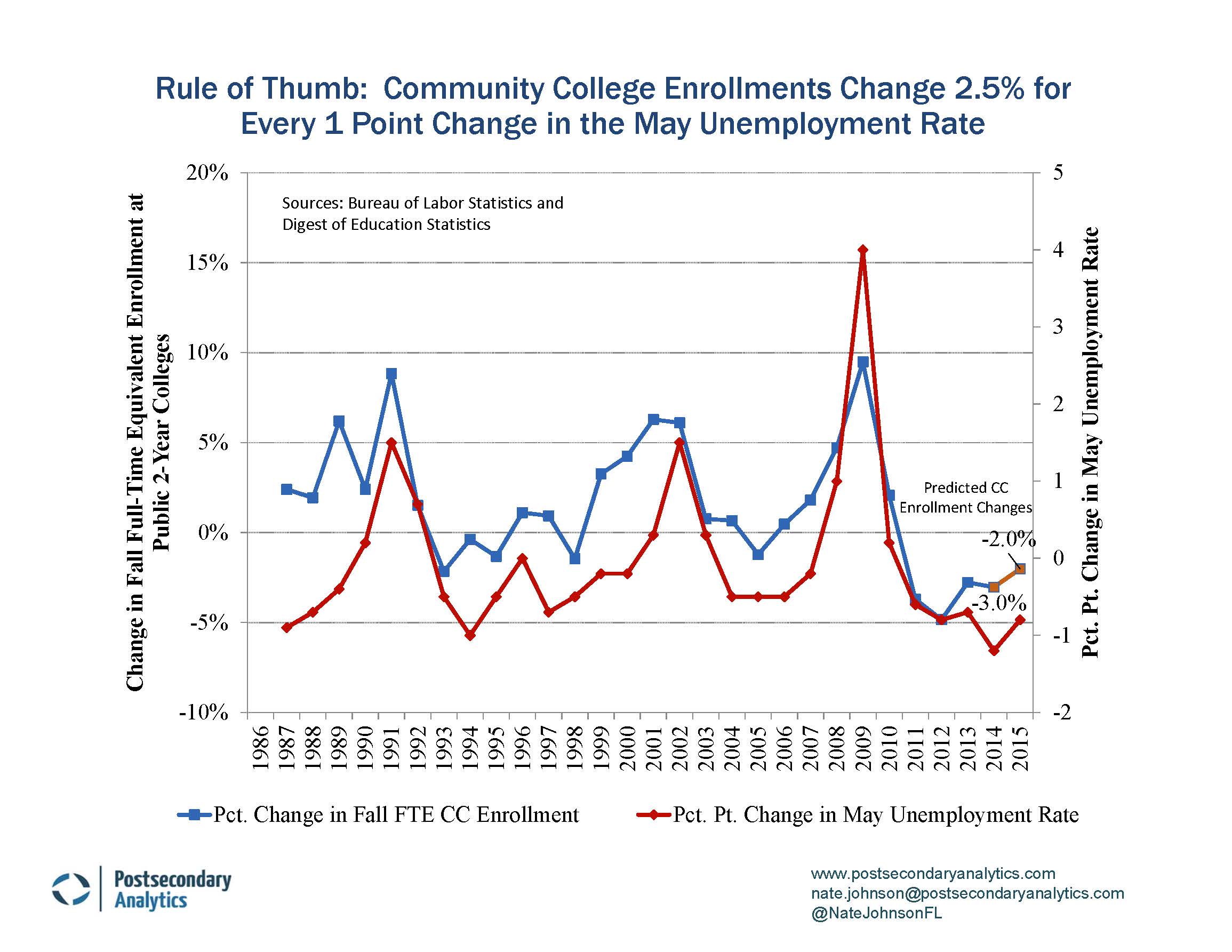You have /5 articles left.
Sign up for a free account or log in.
Employment and unemployment rates, much more than the number of high school graduates or other population trends -- which are important over time but very slow moving -- are the biggest factors driving enrollment for community colleges, for-profit colleges and some open-access four-year institutions.
Selective public and private colleges can control the size of their incoming classes by tinkering with admission criteria, and they tend to draw students whose decision is not whether to attend college but where. But community colleges accept anyone with a high school diploma who wants to enroll, and the size of that potential market varies depending on what the alternatives are.
For low-income students, especially at colleges where tuition is low and often covered by financial aid, the biggest cost of college is the opportunity cost -- the money a student could have earned by working instead of going to school.
In times of high unemployment, that cost for many is zero, and however hard someone might be struggling to make ends meet, going to college doesn't necessarily make it any harder. (Whether they can succeed in college without enough money for food or rent is the real question.)
But when unemployment is low and jobs are relatively plentiful, the choice to enroll is also the choice to leave money on the table, money students may need in the short term to cover basic necessities.
In that case, working in the short term also has its own long-term opportunity cost -- in the higher lifelong earnings available to college graduates.
For middle- and higher-income students, it is easy to choose the much greater long-term benefit over the short-term prospect of poor wages in a low-skill job. But for those with no savings or support from family members, and who may be supporting others with their income as well, work may seem like the only viable option.
So it is not surprising that when unemployment goes up, community college enrollments tend to spike, and when unemployment goes down, enrollments drop. (See image below.)
For every 1 percentage point change in the unemployment rate from May to May, community colleges can expect a 2.5 percent change (up or down) in fall full-time enrollment.
For this fall, if the past is any indication, the 0.8 percentage point drop in unemployment from 2014 to 2015 should translate into between a 1 and 3 percent enrollment decline. Regions hitting a rough patch -- say, the energy-producing areas of the country -- may see the opposite trend.
But with states, institutions, philanthropic organizations and the federal government all working to improve college access and attainment, perhaps one day this correlation will weaken, and low-income students will be able to make the kinds of long-term trade-offs and choices for the future that their better-off counterparts have always found so easy.









